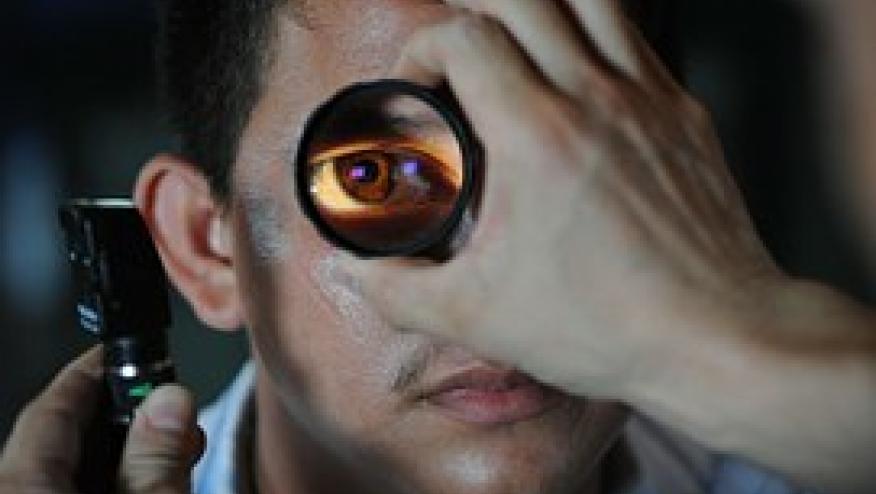My Take on New Ocular Screening Guidelines for Plaquenil Save

A recent article published by the American Academy of Ophthalmology (AAO) presented new recommendations for screening of patients being managed with hydroxychloroquine (HCQ).
In this article, new recommendations were made that changed the previous monitoring paradigm. More importantly, it has repositioned hydroxychloroquine from one of the safest medications that rheumatologists use to a drug that can have potentially significant ocular morbidity (if used in doses greater than 5 mg per kilogram and or for prolonged periods of time).
It has become fairly common practice for most rheumatologists to recommend that patients being treated with hydroxychloroquine be seen for formal visual field evaluation once or twice a year to monitor for retinal toxicity. The previous AAO guideline recommended screening every 12 months. Of course the aim is avoid drug related retinal toxicity, which on ophthalmic examination, appears as the classic Bull’s eye change affecting the macula. 
Once retinal toxicity from hydroxychloroquine occurs, it is thought that the retinal changes are permanent and the disease can progress even if hydroxychloroquine is stopped for 1 to 3 years.
Newer techniques for evaluation of retinal disease have been developed and these techniques can detect retinal toxicity earlier. Spectral Domain Optical Coherence Tomography (SD OCT) uses light to capture micrometer-resolution, three-dimensional images from within optical scattering media. Multifocal Electroretinopathy measures electrical responses of various cell types in the retina. It is thought that although the bull’s eye seen on ophthalmic exam represents a disruption of the pigmented part of the retina, it is the photoreceptors that are the targets of hydroxychloroquine toxicity.
Notably the new recommendations were based on a single study published in 2014 that evaluated the prevalence of and risk factors for hydroxychloroquine retinal toxicity. (Citation source http://buff.ly/2dWimB0)
The study was a Kaiser Permanente retrospective case-control study that examined 2361 patients who had used hydroxychloroquine continuously for at least 5 years according to pharmacy records and who were evaluated with visual field testing or spectral-domain optical coherence tomography.
The main outcomes were toxicity as determined by characteristic visual field loss or retinal thinning and photoreceptor damage. They also examined risk factors and prevalence.
The study findings revealed that when hydroxychloroquine was used at doses < 5mg /kg, the risk of retinopathy was:
- < 1% in the first 5 yrs.
- < 2% in 10 yrs.
- 20 % after 20 yrs.
There was a dose response, such that those receiving doses greater that 5 mg / kg had the greatest risk of retinal toxicity. Risk factors for retinopathy included higher doses and longer durations of use. Other major factors are concomitant renal disease, use of tamoxifen and prior retinal or macular disease.
Thus, the new AAO screening and follow-up recommendations are shown below.
|
Hydroxychloroquine Screening Recommendations |
|
Baseline Screening
|
|
Annual Screening
|
|
*SD OCT: Spectral Domain Optical Coherence Tomography |
These recommendations hinge on ONE single study and the one study and recommendations were developed without the input of a rheumatologist. I wonder if any of the authors in either of these papers has ever prescribed antimalarial therapy. A logistic regression analysis was used to define risk factors but it is unclear if there were sufficient number of patients to differentiate risk based on ethnicity and race or individual disease states. Toxicity was determined on the basis of visual field loss or retinal thinning and photoreceptor damage but not both.
I suggest that we view these recommendations as preliminary and not gospel. Although I concur with the data on using less than 5mg/kg per day for now, I would recommend continued vigilance for ocular toxicity once or twice a year. More importantly it is clear that data is required to form more concrete recommendations and better definitions of risk factors. This data exists in European databases and should be reviewed and published.
Ideally those practitioners who prescribe antimalarial medications (e.g., rheumatologists, dermatologists) should be involved in the process of developing useful and preventative guidelines.








If you are a health practitioner, you may Login/Register to comment.
Due to the nature of these comment forums, only health practitioners are allowed to comment at this time.